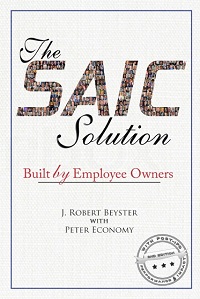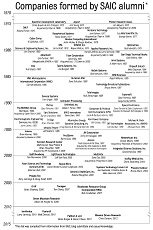Genetics, Vintage Cars, and the Energy Problem
6 Comments Published by Dr. Beyster June 23rd, 2008 in San Diego, Technology.Last week was interesting for me in that the climate has changed completely in San Diego and it has been much hotter. Like other parts of the country, we now have to rely on air conditioning to cool our homes and events. One event where I would have enjoyed more air conditioning was on Sunday at Malin Burnham’s house. Malin founded the Burnham Institute for Medical Research and he had a lunch gathering at his home in Point Loma, followed by a panel discussion on the future of genetics held at the Evans Garage museum near the airport. The Evans Garage has more than a dozen vintage cars, all in tip-top condition. Most of the cars date from around 1900-1915 and none were current brands, having long ago either gone out of business or been swallowed up by one of their competitors. The four speakers were Craig Venter of the Venter Institute located here in La Jolla and in Rockville, Maryland, Erkki Ruoslahti from the Santa Barbara branch of the Burnham Institute, Nobel Prize winner Kary Mullis — a distinguished researcher at Children’s Hospital and Research Institute in Oakland — and Robert Kline, chairman of governing committee of the California Institute for Regenerative Medicine in Palo Alto. John Reed from the Burnham Institute served as moderator.
Craig Venter told us that he thinks genetics offers the possibility of an unusual but ingenious answer to our energy problem. He believes that meaningful amounts of algae that is genetically engineered to create oil-like molecules can be grown. This was the best seller of the conference, and he has been promoting the idea with the likes of Barack Obama, who feels that something drastic needs to be done to counter the devastating impact the oil and gas monopolies are having on the economies of all the world’s countries. Erkki Ruoslahti discussed the possibility of using nanotechnology to insert just the right amount of medicine into a cancer victim’s diet to attack the disease — all done non-invasively. He has conducted a variety of experiments to establish the veracity of this process. These ideas are in the final stages of development and testing, and results look good. Breakthroughs are not unexpected as the research continues. Kary Mullis is an expert in the biochemistry side of genetic research, pioneering the PCR (polymerase chain reaction) methodology that has enabled genetic researchers to synthesize large quantities of specific copies of the DNA molecule very quickly. He has an interesting way of generating ideas which is to put the problem in his head and then think not directly about it — but indirectly — until a solution comes to him. He said it was a sure thing with him, and he highly recommended it to other people. Perhaps I will try this suggestion and see if I can also win a Nobel Prize in the process. Robert Kline led the discussion of the financing of these genomics projects. Robert informed us that not much government funding is going to private institutions working on genetic problems these days. Most research, development, and start-up funds are coming, if at all, from private sources — the medical research budgets have been severely curtailed by the Iraq War. States such as California are stepping in to float bonds for several hundred million dollars for the stem cell initiative. This technique using state funds will work for nonprofit research institutes but not for profit-making institutes.





Great topics here Dr Beyster. I’ve read about the algae process and how it can reproduce itself daily. A good application of science to commercialize that process….although I’ve heard it could be many years before that happens. In the meantime, there’s a lot of enabling policy helping the US to improve energy efficiency. The Energy Policy Act of 2005 re-authorized the Federal government to use Energy Savings Performance Contracts (ESPCs) and in 2007 performance contracting was made permanent which solidifies the growth of ESCO’s (Energy Service Co’s).
The performance contracting works well in that the ESCO’s guarantee energy savings from the solution they engineer and commission. Those solutions may be as simple as lighting or boiler upgrades or may involve more complex re-engineering of manufacturing processes with upgraded equipment. The deal for the gov’t or an industrial company is the ESCO’s will find 3rd party financing for the upgrade and issue them an operating lease without requiring the client to put up capital equipment (remember how you hated to spend CABR money?). The lease is structured to ensure the monthly payment is at least equal to the energy savings from the project. Savings are monitored and normalized for price changes, plant shifts, etc so that the ESCO doesn’t take commodity risk. At the end of the term 100% of the savings then accrues to the client.
This has been sweeping through the government the last few years ($1B in projects spent last year as I recall) and the Industrial Market, which consumes vast amounts of energy, is virtually untapped. I see this as a way to modernize America’s plants and make us more competitive.
Just thought you might be interested. Mary Ann tells me your schedule is busy. You need to slow down so she doesn’t wear out.
Best Regards,
Kevin Winstead
Bob:
In 1975, Dr. Howard A. Wilcox, a scientist at NUC, then, when NUC merged with NELC in 1977, at NOSC, published ‘Hothouse Earth’ (Praeger Publishers, New York). In that book he warned that within the lifetimes of ‘our great grandchildren’ the oceans may rise and swallow coastal cities; that the polar ice-caps could melt, etc.
He suggested that the solution lay in the development of solar technology, most particularly in ocean farming for food, fuels, and fertilizers, by marshalling algae etc.
Dr. Wilcox was the head of the Navy’s Ocean Farm Project. He was a quiet unassuming man who was crying in the dark at the time, since there was plenty of cheap fuel available. Eventually the Navy tired of funding the effort
We should note that when Dr. Wilcox published his warning, the CO2 density was about 315 parts per million: today it is at 380 and it is projected to reach 450 to 550 by the end of this century (Scientific American; June, 2006).
Unless the effect is non-linear!
Dick Shearer.
Dr. Beyster – It was great to see you at the event. I’m glad that you enjoyed the speakers. Please let me know if you have any questions about Burnham Institute for Medical Research. I really enjoy working here. It reminds me of SAIC in a lot of ways.
Take care.
Eric Lofgren
Kevin: Thank you for your note. I am glad to hear that the federal government is issuing contracts to encourage energy savings. This will clearly benefit many energy service companies. The fact that these are performance-based contracts works well, as you said. Certainly many things other than the obvious solutions are going to materialize. Energy conservation is beginning to catch on. Enough research has been done on ethanol so we can be pretty sure that it isn’t the panacea. A combination of other energy-producing processes including building more nuclear stations is probably the answer. Financing to support all this is clearly available as you can tell from the performance of the energy part of the Dow Jones Industrials. Keep me posted and I will continue to dump everything I learn on my blog site. — Bob
Dick: Thanks for your posting. I don’t personally know Dr. Wilcox, but I think he is in agreement with many other authorities: ocean levels will continue to rise slowly if global warming is not arrested in the near future. Whether all the actions required by industry to clean up the fossil fuel mess — not just in this country, but in India, China, and others — will be quick enough I don’t know. Meanwhile, just the small changes in climate that have occurred over the past few years have convinced me that we have a serious challenge which we may or may not be capable of meeting. — Bob
Eric: Thanks for your note. I enjoyed the event at the Evans Auto Museum. I’m glad you’re enjoying your work. One of these days I might like to make a field trip to the Burnham Institute to see what you do. Ralph can arrange it. — Bob